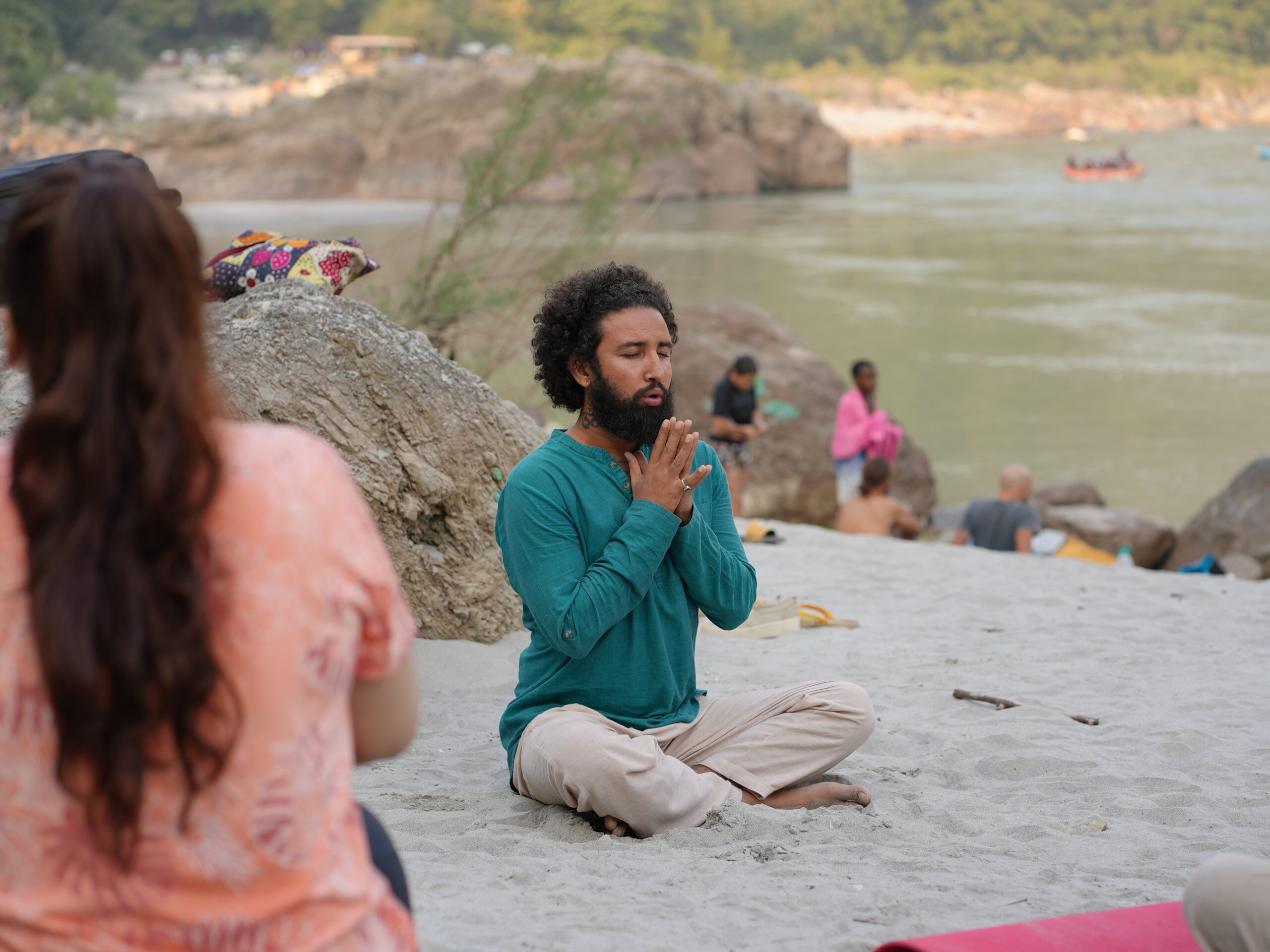In the serene world of yoga, where every pose tells a story and each moment invites mindfulness, one element often takes center stage: breath. Imagine unlocking the full potential of your practice by harnessing the power of pranayama—the art and science of breath control. As yoga teacher training programs evolve to embrace this ancient wisdom, they’re not just shaping skilled instructors; they’re cultivating holistic wellness warriors equipped to inspire change both on and off the mat. Join us as we explore how integrating pranayama into these transformative journeys enhances physical prowess, deepens self-awareness, and ignites a passion for teaching that resonates long after graduation. Ready to breathe new life into your practice? Let’s dive in!
Introduction to Pranayama and its significance in yoga
Breath is often taken for granted, yet it is the very essence of life. In the world of yoga, breath serves as a vital thread that weaves together mind and body. Enter Pranayama, an ancient practice focused on controlling breath to enhance energy and awareness. For those embarking on yoga teacher training programs, mastering Pranayama isn’t just an added bonus; it’s a transformative journey that can elevate teaching skills and deepen personal practice.
As yogis explore this harmonious connection between breath and movement, they discover how essential breathing techniques are in creating balance both on and off the mat. Whether you’re stepping into your first class or seeking to enrich your existing knowledge, understanding Pranayama opens doors to new dimensions within yoga philosophy. Let’s delve into how these practices shape not only individual growth but also redefine what it means to be a successful yoga instructor through comprehensive training programs centered around breathwork.
The role of breath in yoga teacher training programs
Breath is often considered the bridge between body and mind in yoga. Within yoga teacher training programs, understanding breath can elevate a practice from physical movement to a profound experience.
Instructors guide students through various breathing techniques, emphasizing their importance in achieving focus and presence. This connection deepens not only personal practice but also enhances teaching skills.
When trainees learn how to consciously control their breath, they discover its power to calm anxiety and promote clarity. Breath becomes an essential tool for managing stress during intense sessions or when addressing challenging poses.
Moreover, teachers who master pranayama can share this knowledge with students. They inspire others to cultivate awareness of their own breath patterns, fostering a more holistic approach to yoga that transcends postures alone. The transformative role of breath creates an atmosphere ripe for growth and self-discovery throughout the training process.
Benefits of incorporating Pranayama into your yoga practice
Incorporating Pranayama into your yoga practice offers transformative benefits. It enhances lung capacity and promotes better oxygen flow throughout the body. With each breath, you cultivate a sense of vitality.
This ancient technique helps reduce stress and anxiety levels. As you learn to control your breath, it becomes easier to calm the mind. A tranquil state allows for deeper meditation.
Physical stamina also improves with regular Pranayama practice. The focus on breathing strengthens core muscles and supports overall endurance in asanas.
Moreover, practicing Pranayama fosters mindfulness. Each intentional inhale and exhale draws you closer to present-moment awareness. This connection deepens your relationship with both body and spirit.
Lastly, it aids in balancing energy levels within the body. By harmonizing prana, or life force, practitioners often notice an uplifted mood and increased clarity in their daily lives.
Different types of Pranayama techniques
Kapalbhati is a dynamic breathing technique. It involves forceful exhalations followed by passive inhalations. This method energizes the mind and clears toxins from the body.
Anulom Vilom, or alternate nostril breathing, balances energy flow between both hemispheres of the brain. It promotes calmness and reduces stress levels effectively.
Bhastrika resembles bellows in action. Inhaling deeply and exhaling vigorously helps increase oxygen supply to your system. This invigorating practice boosts mental clarity and vitality.
Ujjayi breath, often referred to as “victorious breath,” creates an audible sound during inhalation and exhalation. This technique enhances focus during yoga poses while cultivating inner peace.
Nadi Shodhan focuses on purifying energy channels in the body. By alternating breaths through each nostril, it harmonizes physical health with emotional well-being, making it a favorite among practitioners seeking balance in their lives.
How Pranayama enhances the mind-body connection in yoga teacher training
Pranayama deepens the relationship between mind and body, making it a cornerstone of yoga teacher training. When practitioners focus on their breath, they create an inner dialogue that enhances awareness. This heightened state of consciousness allows for a more profound connection to physical postures.
As students embrace breathing techniques, they often notice shifts in energy levels and emotional states. Each inhalation invites vitality; each exhalation releases tension. This cycle fosters resilience both on and off the mat.
Incorporating Pranayama into training encourages teachers to guide others through similar transformations. Understanding breath not only improves personal practice but also equips instructors with tools to help students explore their own experiences.
Ultimately, as educators develop this intricate bond between breath and movement, they inspire deeper connections within their communities. It’s a ripple effect that begins with mindful breaths flowing freely through every session.
Case studies and personal experiences from yoga teachers who have incorporated Pranayama into their training programs
Yoga teachers across the globe have shared transformative experiences after integrating Pranayama into their training programs. One teacher from California noted that adding breathwork sessions enhanced her students’ focus and presence on the mat. She observed a marked improvement in their ability to connect with challenging poses.
In another case, a yoga instructor in India reported that incorporating Anulom Vilom significantly reduced anxiety levels among trainees. This practice not only calmed their minds but also fostered deeper connections within group settings.
Similarly, a group of instructors in New York found Bhastrika breathing exercises invigorating. Students felt energized and more engaged during lessons, leading to richer discussions about yoga philosophy.
These personal accounts illustrate how Pranayama can elevate both teaching and learning experiences, creating a holistic approach to yoga education that resonates deeply with practitioners at all levels.
Tips for beginners on incorporating Pranayama into their daily practice
Starting with Pranayama doesn’t have to be daunting. A few simple steps can help you ease into this transformative practice.
Begin by creating a calm environment. Find a comfortable space where distractions are minimal. This sets the tone for your breathwork session.
Start with just five minutes each day. You don’t need hours to reap the benefits of Pranayama. Gradually increase your practice time as you feel more comfortable.
Focus on your breath’s natural rhythm before diving into techniques. Observing your inhalations and exhalations can deepen your awareness and connection to yourself.
You might want to keep a journal of your experiences and progress. Noticing how different techniques impact your mood or energy levels can provide motivation.
Lastly, consider joining online classes or community groups focused on Pranayama. Connecting with others enhances learning and creates support in your journey.
Common misconceptions about Pranayama and debunking them
Pranayama, while widely practiced, is surrounded by myths that can deter newcomers. One common misconception is that Pranayama is solely about breath control and not much else. In reality, it embodies a deeper philosophy of yoga—connecting breath with the mind and spirit.
Another myth suggests that Pranayama requires advanced skills or fitness levels. This could not be further from the truth; anyone can start practicing these techniques regardless of their experience in yoga.
Some believe that Pranayama leads to hyperventilation or dizziness if done incorrectly. While it’s crucial to practice under guidance initially, when executed properly, Pranayama promotes calmness and clarity rather than discomfort.
A frequent concern involves the idea that certain forms of breathing may trigger anxiety for some individuals. However, most techniques are designed to alleviate stress rather than exacerbate it.
Lastly, many people think they need special equipment for effective practice. All you really need is your breath and dedication; no fancy mats or props required!
By debunking these misconceptions surrounding Pranayama within Yoga Teacher Training Programs, enthusiasts can embrace its benefits more fully without hesitation or doubt in their journey toward improved well-being through mindfulness practices.



